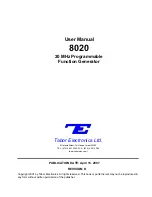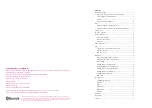
FLEX4ML
User Manual
36
●DMX512:
The communication standard developed by USITT for entertainment and digital lighting
systems.The wide adoption of the Digital Multiplex (DMX) protocol has seen the protocol used for a
wide range of other devices including video controllers. DMX512 is delivered over cable of 2 twisted pairs
with 5pin XLR cables for connection.
●ArtNet:
An ethernet protocol based on TCP/IP protocol stack, mainly used in entertainment/events
applications. Built on the DMX512 data format, ArtNet enables multiple “universes” of DMX512 to be
transmitted using ethernet networks for transport.
●
MIDI:
MIDI is the abbreviation of Musical Instrument Digital Interface. As the name indicates the
protocol was developed for communication between electronical musical instruments and latterly
computers. MIDI instructions are triggers or commands sent over twisted pair cables, typically using
5pin DIN connectors
.
●
OSC:
The principle of Open Sound Control (OSC) protocol is for networking sound synthesizers,
computers, and multimedia devices for musical performance or show control. As with XML and JSON,
the OSC protocol allows sharing data. OSC is transported via UDP packets between devices connected
on an Ethernet.
●
Brightness
:
Usually refers to the amount or intensity of video light produced on a screen without
regard to colour. Sometimes called black level.
●
Contrast Ratio
:
The ratio of the high light output level divided by the low light output level. In
theory, the contrast ratio of the television system should be at least 100:1, if not 300:1. In reality,
there are several limitations. Well-controlled viewing conditions should yield a practical contrast
ratio of 30:1 to 50:1.
●
Colour Temperature:
The colour quality, expressed in degrees Kelvin (K), of a light source. The higher
the colour temperature, the bluer the light. The lower the temperature, the redder the light.
Benchmark colour temperature for the A/V industryinclude5000°K,6500°K,and9000°K.
●
Saturation:
Chroma, Chroma gain. The intensity of the colour, or the extent to which a given colour in
any image is free from white. The less white in a colour, the truer the colour or the greater its
saturation. Saturation is the amount of pigment in a colour, and not the intensity.
●
Gamma:
The light output of a CRT is not linear with respect to the voltage input. The difference
between what you should have and what is actually output is known as gamma.
●
Frame:
In interlaced video, a frame is one complete image.A video frame is made up of two fields,
or two sets of interlaced lines. In a film, a frame is one still image of a series that makes up a motion
image.


































